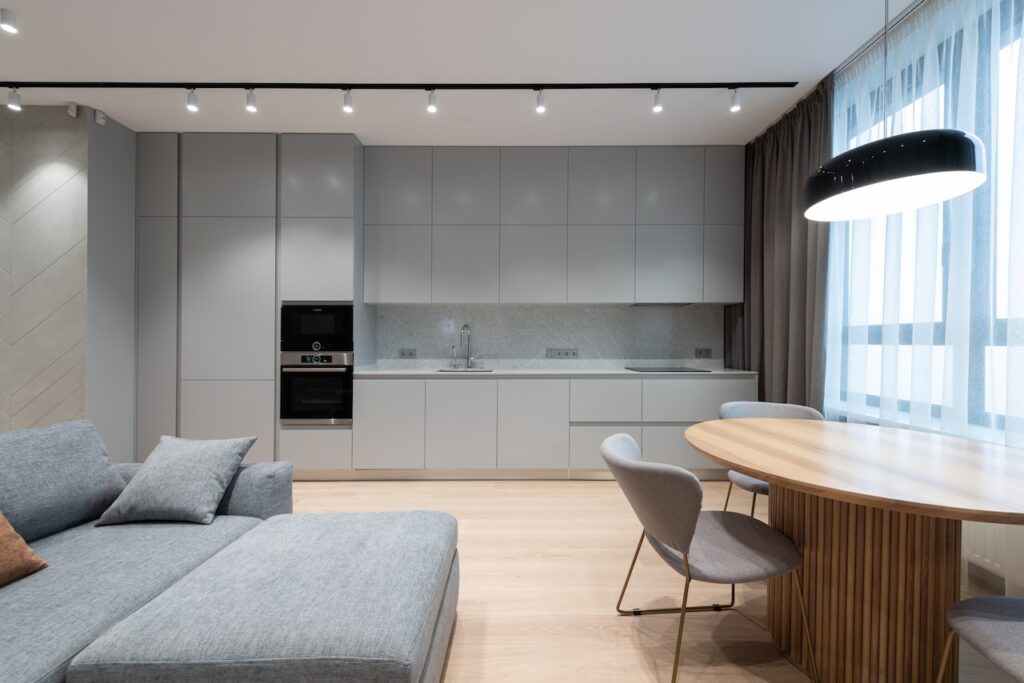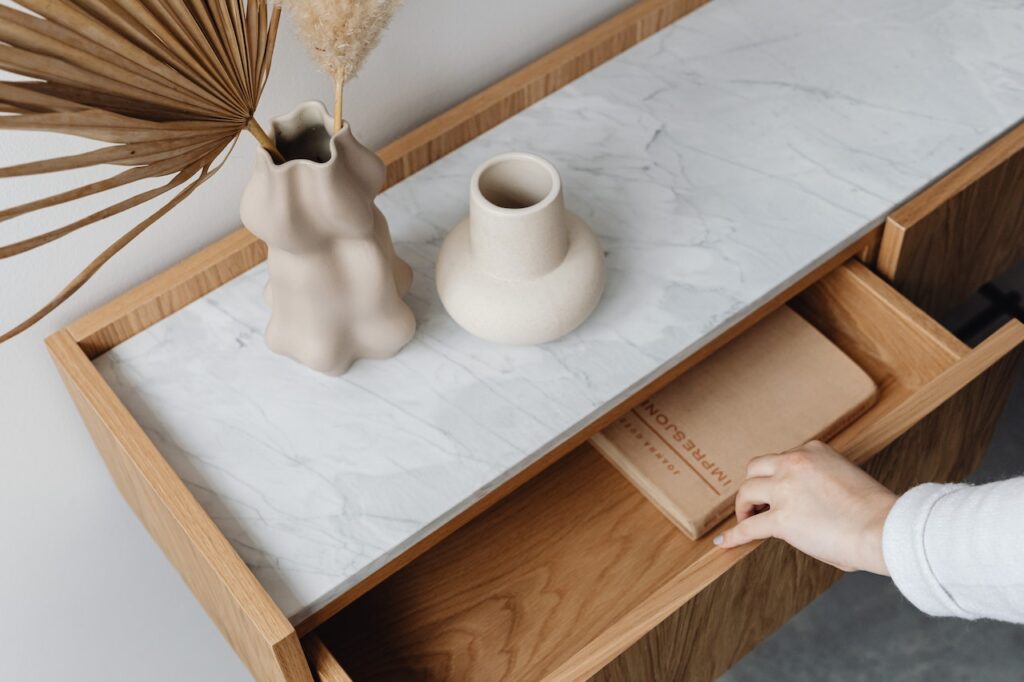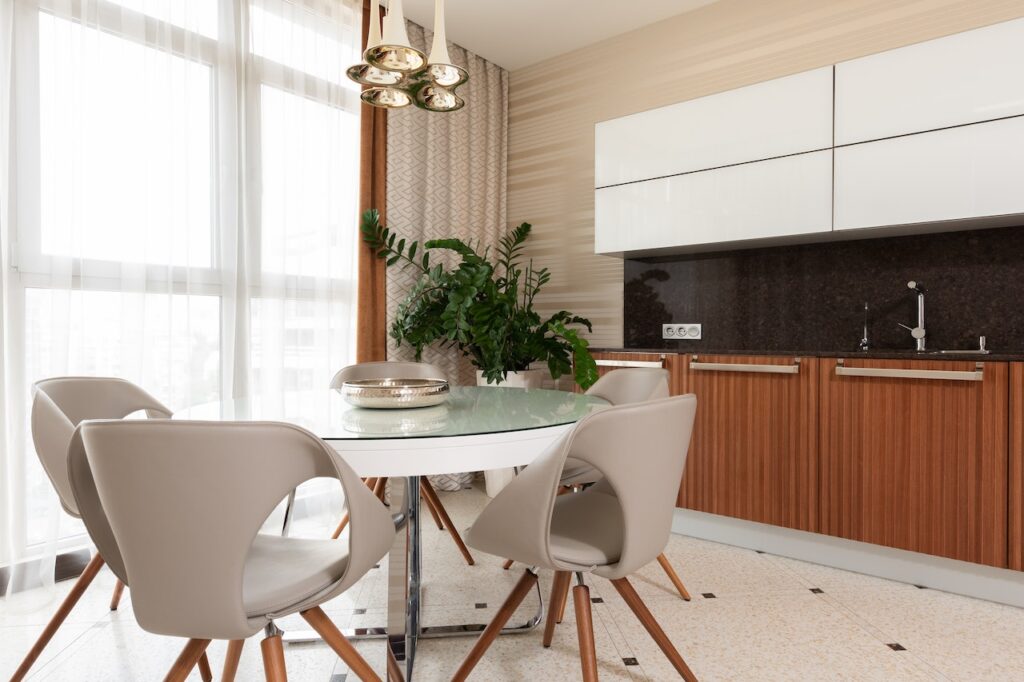Key Principles of Japanese Interior Design
In the world of interior design, few styles have captured the admiration of the world quite like Japanese interior design. Its serene beauty and subtle elegance have become a timeless inspiration. Overall, this design approach embodies a unique blend of minimalism, nature, and a profound appreciation for imperfections. Additionally, every aspect is meticulously crafted to create an atmosphere of tranquility and balance.
Minimalism Is One Of The Key Principles of Japanese Interior Design
At the heart of Japanese interior design, minimalism exudes a serene and uncluttered ambiance. It emphasizes simplicity, functionality, and harmonious coexistence with nature. Neutral colors and natural materials dominate the palette, creating a tranquil backdrop that allows the mind to breathe. Every element serves a purpose, with no extraneous frills to distract from the essence of the space. Additionally, clean lines and unadorned surfaces create a sense of inner peace. Objects are stripped down to their core, with only the essentials remaining, creating a profound beauty in their purest form.
The deliberate absence of excess brings about a profound sense of clarity and spaciousness, enabling one to appreciate the interplay between light and shadow fully. In this aesthetic realm, less is truly more, as simplicity becomes a profound statement in and of itself. Each carefully selected piece becomes a focal point, exuding a quiet elegance that speaks volumes. Minimalism in Japanese interior design teaches us that true beauty lies not in lavish ornamentation but in the restrained and purposeful arrangement of elements. By embracing simplicity and removing the superfluous, we can create spaces that nurture our souls and inspire a deeper connection to our surroundings.

Wabi-sabi
Wabi-sabi celebrates imperfection and transience. It finds beauty in the worn, weathered, and aged. Furthermore, rustic elements and organic textures evoke a sense of authenticity and rawness. Asymmetry and simplicity are balanced, creating a poetic harmony that resonates deeply. Moreover, wabi-sabi teaches us to embrace the passage of time and find joy in the fleeting moments. It encourages us to appreciate the cracks in a ceramic bowl or the patina on a wooden surface. Overall, the imperfections become the very essence of the design, telling stories of history and evolution. Through wabi-sabi, we learn to find contentment in the simple and unpretentious.
In addition, it reminds us to seek beauty in the ordinary and to cherish the irregularities that make each object unique. Furthermore, the philosophy of wabi-sabi extends beyond aesthetics and permeates our perception of the world. Also, it cultivates a sense of acceptance and gratitude for the transient nature of life. With wabi-sabi, we learn to let go of perfection and embrace the beauty that arises from the interplay of time, nature, and human touch. Additionally, it encourages us to slow down, savor the moment, and find solace in the quiet beauty surrounding us. Overall, wabi-sabi invites us to find harmony in the imperfect.
Ma – Negative Space
Ma is a fundamental principle that celebrates the power of negative space. It is the intentional embrace of emptiness and the art of creating balance through open, uncluttered spaces. In the world of Ma, less is truly more. Also, it is a breath of fresh air amidst the chaos of daily life. The absence of objects allows the mind to rest and rejuvenate. Ma creates a sense of tranquility and allows the eye to appreciate the significance of what remains. It is the pause between notes in a musical composition, the silence that gives meaning to sound.
In addition, Ma enables us to appreciate the beauty of simplicity and the profound impact of that which is not there. It is the empty room that beckons, the clean lines that guide the eye. In the realm of Ma, each object finds its rightful place, and the spaces in between are as important as the objects themselves. The interplay of positive and negative space creates a dance of harmony and rhythm. The simplicity of Ma fosters a sense of clarity and mindfulness. It invites us to declutter not just our physical spaces but also our minds. By embracing Ma, we can create environments that inspire calm and introspection, offering a respite from the noise and distractions of the modern world.

Harmonious Balance Is Another Crucial Principle
This is one of the core principles of Japanese interior design, creating a sense of equilibrium and serenity. It embodies a delicate interplay between contrasting elements, blending them seamlessly into a unified whole. Moreover, the design is neither overpowering nor lacking but precisely balanced. The placement of objects, the furniture arrangement, and the use of color all contribute to this sense of equilibrium. So, each element holds its rightful place, enhancing the overall composition. It is a dance of proportions, where nothing overwhelms or dominates. The principle of harmonious balance extends beyond aesthetics; it reflects a deeper understanding of life’s rhythms and interconnectedness.
So, whether it’s the balance between empty and occupied spaces or the arrangement of different materials, the result is an atmosphere that promotes tranquility and well-being. If you’re looking for great ways to remodel your Tokyo home, follow this principle as well. Not only does it greatly affect the look of a home, but it also teaches us to find balance in our lives. Additionally, it reminds us to seek a sense of balance and moderation in all aspects. Creating a harmonious balance in our living spaces creates environments that bring a sense of peace into our daily lives.
Last But Not Least Is Functional Simplicity
Next, functional simplicity is a guiding principle that lies at the heart of Japanese interior design, embodying a sense of purpose and practicality. It celebrates the beauty of simplicity in every aspect of the space. Furniture, objects, and layout are all designed with a clear intention—to serve a specific function. Each element has a purpose and contributes to the overall functionality of the space. Unnecessary adornments are stripped away, leaving only what is essential.
Additionally, clean lines and uncluttered surfaces create a sense of calm and clarity. Now, the focus is on usability and efficiency, ensuring that every element serves its intended purpose without unnecessary complications. Overall, Japanese interior design teaches us that functionality and aesthetics can coexist harmoniously. It demonstrates that beauty can be found in the efficiency and practicality of design choices. Every object and piece of furniture is carefully chosen to optimize space and enhance functionality. Also, the emphasis on functional simplicity encourages us to declutter our living spaces and adopt a minimalist approach to design. By embracing this principle, we create environments that are not only visually appealing but also highly functional, enabling us to navigate our daily lives with ease and efficiency. Functional simplicity teaches us to appreciate the elegance that arises from simplicity and practicality. Furthermore, it allows us to focus on what truly matters and create spaces that support our lifestyles.

In Summary
From minimalism to wabi-sabi, each of these principles of Japanese interior design offers unique insights into creating spaces that nurture our well-being. It teaches us to find beauty in simplicity and to create a harmonious balance in our environments. By incorporating these principles into our own lives, we can create spaces that inspire mindfulness and reflect our values and aspirations.





Recent Comments